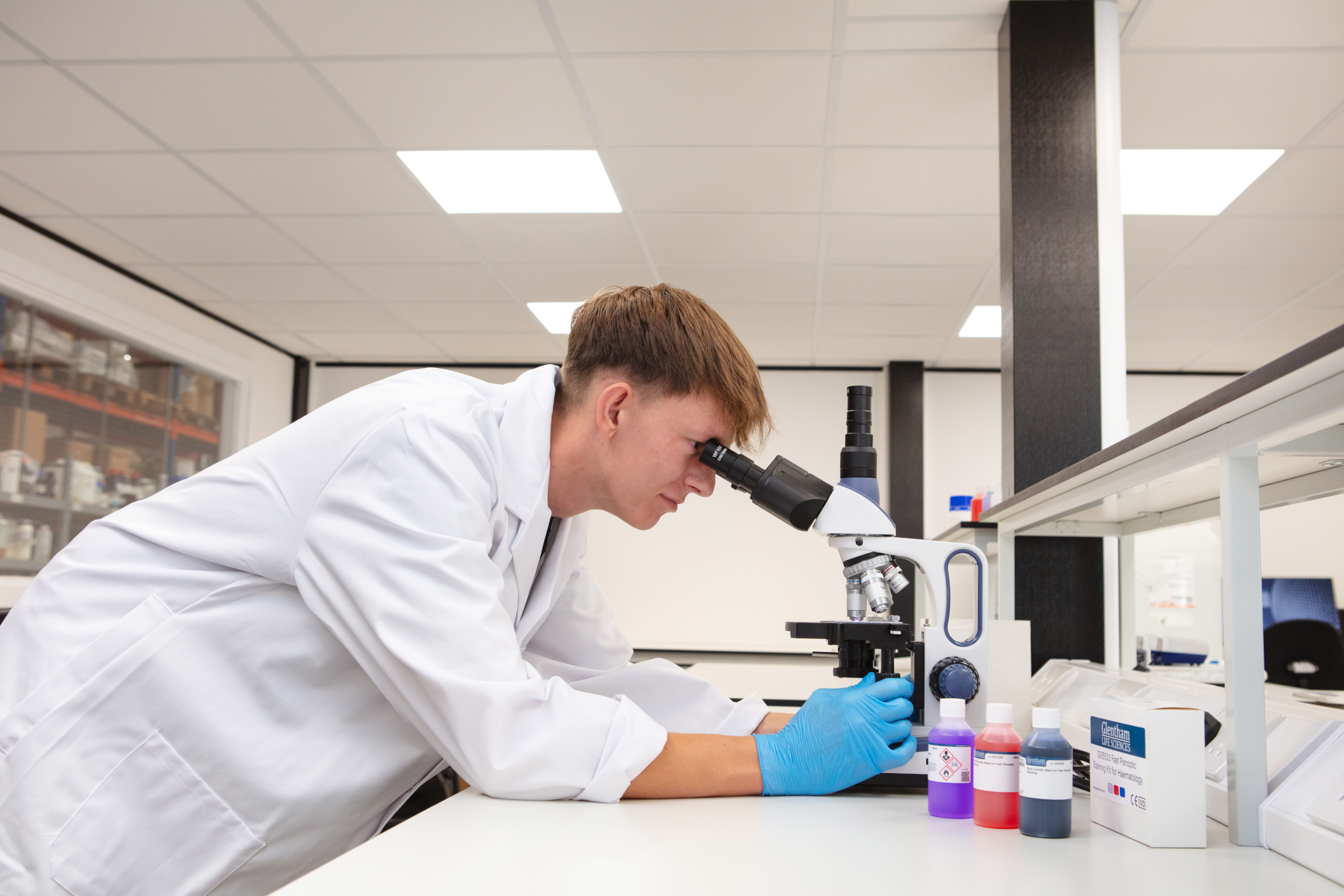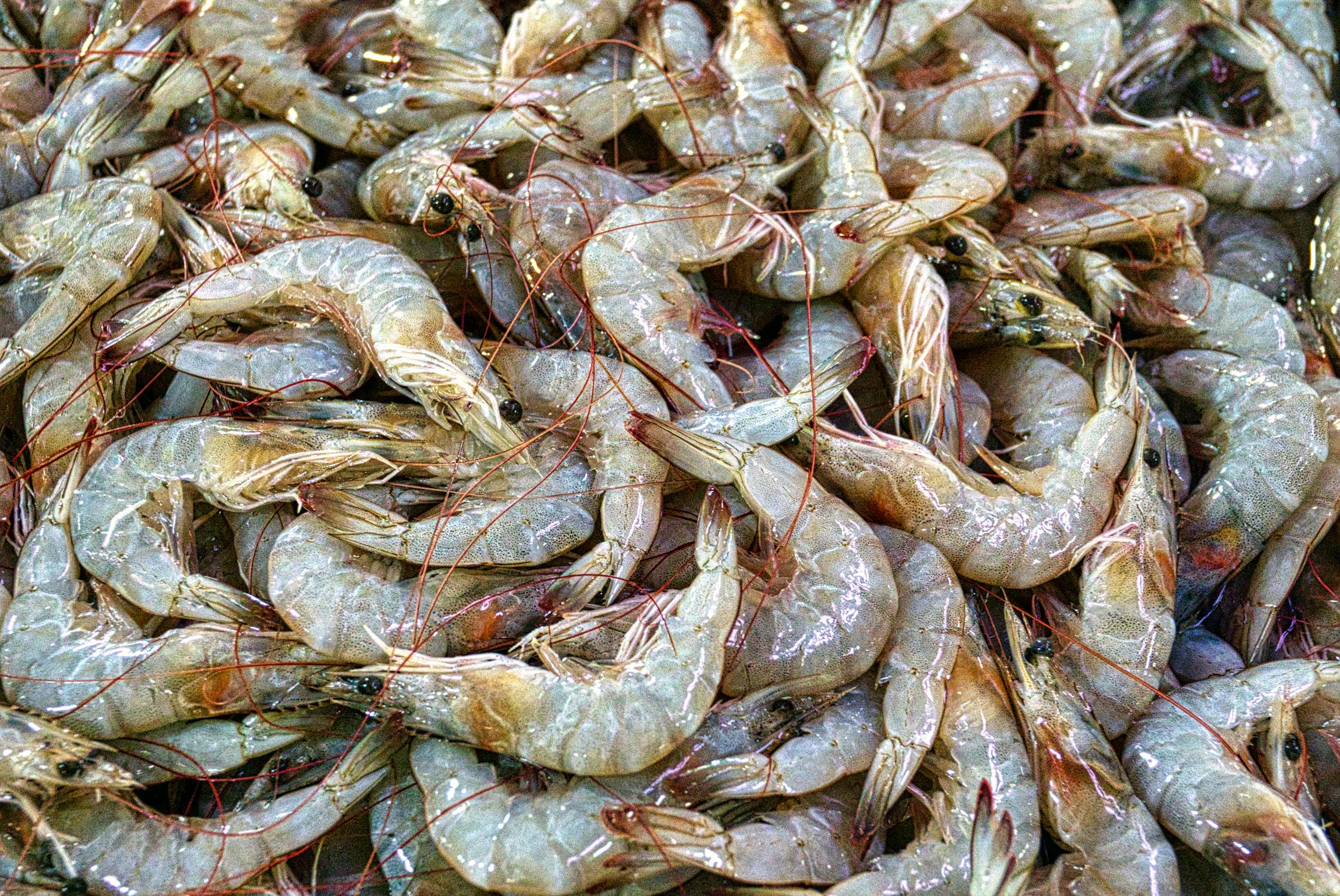Experts from Glentham Life Sciences explore chitosan’s potential applications and share what’s on offer in its chitosan product range

Diagnostic Dyes - Viewing the Invisible
Our team explores a selection of biological dyes, their histories, chemistries and applications
12 Avril 2025
Diagnostic Dyes - Viewing the Invisible
Dyes have a multitude of uses, from making clothes more vibrant, to uses as therapeutic agents for humans and animals. However, with specific relevance to haematology, cytology and histology, some dyes have taken a pivotal role in improving healthcare, allowing us to examine cellular features in clear and colourful detail. Here, we explore a selection of these biological dyes, their histories, chemistries and applications.
Crystal Violet
Crystal violet is a synthetic triarylmethane dye first introduced in 1861 as one of the components of the textile dye methyl violet. Soon after in 1880, George Grübler established crystal violet, under the name Gentian violet, as a popular staining reagent for histology, helping to visualise and fix cells. Alongside this, crystal violet was also developed as an antiseptic due to its antibacterial, antifungal and anthelmintic properties. While it has largely been replaced as a medicine, crystal violet is still widely used in laboratory techniques today.One of the most notable staining techniques, Gram staining, uses crystal violet as a key step in distinguishing and identifying gram-positive and gram-negative species of bacteria. Crystal violet results in a purple stain retained in gram-positive bacteria, allowing distinction between the pink counter-stained gram-negative bacteria. Beyond this, crystal violet is also used as part of Lieb's stain to stain and identify amyloid deposits in tissue samples. Amyloid deposits take on a violet-red colour, while the remaining issue stains blue.
Glentham Life Sciences offers standard (GA9809) and USP grade (GA0011) crystal violet, as well as a ready-to-use 1% aqueous solution (GA9396).
Methylene Blue
First synthesised in 1876 by German chemist Heinrich Caro, methylene blue was initially limited in uses to textile dying. Its ability to selectively stain bacteria was discovered shortly afterward, in 1891, and the scope of its applications expanded. Outside of biological staining, methylene blue has additional applications in medicine, as an antidepressant, a treatment for methemoglobinemia, and as a cure for cyanide poisoning. The stain is cationic, binding to negatively charged cell components, such as RNA. For this reason, it is the typical stain used in Northern Blotting, a technique of studying gene expression by detecting isolated RNA in a sample.The stain also has applications in winemaking, being reduced on interactions with healthy eukaryotic cells such as yeast, turning colourless. A dead cell does not contain the active enzymes required to do this and will be stained blue, and for this reason, methylene blue can be used to determine cell viability of yeast cultures in wine inoculations. New methylene blue is chemically different from methylene blue, and is an effective reticulocyte stain, targeting the reticulofilamentous material of the immature red blood cells.
Glenham Life Sciences has a variety of methylene blue stains, ranging from Methylene Blue, anhydrous (GT1060), to New Methylene Blue (GT3530), to a variety of solutions.
Haematoxylin
The use of haematoxylin as a biological stain dates back over 250 years ago, shortly after the invention of microscopy itself. During this period of time, the pioneers of this field would use stains of natural origin such as saffron and indigo, with haematoxylin sharing similar origins. The compound is extracted from the Mexican logwood plant, with the scientific name Haematoxylum campechianum, from which the dye derives its name.While haematoxylin is the name of the chemical extracted, it acts more as a stain precursor, requiring the addition of oxidiser and then when complexed with aluminium ions creates a deep, rich purple compound. It is in this form that haematological and histological samples can be immersed to reveal various biological structures. Typically absorbed by the nuclei of cells, haematoxylin may also stain other cell organelles and tissue fibres. Different haematoxylin preparations have been established to assist with these different staining characteristics. While the stain can be used by itself, it is more commonly paired with counter stains such as eosin to give the ubiquitous H&E staining technique, or with the combination stain developed and named after George Papanicolaou for the detection of cervical cancer.
Glentham Life Sciences has both raw material (e.g. GT7295 Haematoxylin (C.I 75290)) as well as numerous ready-to-use haematoxylin formulations such as Gill’s No. 1, No. 2 and No. 3 (GT4757, GT3728, and GT7060), Mayer’s (GT4631) and Harris Modified (GT0111).
Fast Blue B
Fast Blue B is a synthetic dye commonly used in haematology, histology and diagnostics. It is also used in other scientific disciplines such as forensic science and chemical synthesis.Fast Blue B reacts with 1-naphthol to form a distinctive purple-coloured diazonium dye. This reactivity makes it effective in detecting enzyme activity in plants and animals. For example, pancreatic lipase inhibition can be detected using Fast Blue B. Naphthyl acetate can be used as a substrate to form enzymatic product 1-naphthol which can be visualised using TLC assay with Fast Blue B as a dye. Areas of enzyme inhibition will appear as white spots on the blue-stained TLC plate. Inhibition of other enzymes, such as acetylcholinesterase, can also be detected using this testing method.
Another enzyme that can be detected by utilising the reactivity of Fast Blue B with 1-naphthol is acid phosphatase. This enzyme catalyses the hydrolysis of naphthyl phosphate to form 1-naphthol, which can be detected by staining with Fast Blue B. Acid phosphatase is found in human platelets, red blood cells, bone marrow, liver, spleen and prostate. Testing for acid phosphatase is commonly carried out in medical laboratories as abnormally high levels of this enzyme can indicate diseases such as prostate cancer, as well as injury and infection. This means that the acid phosphatase test can be used in diagnostics and to monitor the progress of treatment.
Other histological applications include visualising cellular structures in tissue samples.
Glentham Life Sciences offers Fast Blue B salt (GT7674).
Eosin Y
While H&E staining is one of the most well-known and used staining techniques, eosin became the counterstain a little over 100 years after haematoxylin. A synthetic dye created by the bromination of equally important fluorescein, eosin Y bears four bromine atoms. A similar synthesis route can yield the less frequently used eosin B. The two dyes are typically seen as being interchangeable, but by far, eosin Y enjoys the greater prevalence.When used in histological applications, eosin stains cytoplasm pink, providing contrast of blue-stained nuclei from haematoxylin. Because of its usefulness as a counterstain, it features in many other staining protocols such as Papanicolaou, Giemsa and other related methodologies.
Eosin Y is available both as the sodium salt for ease of dissolution in water (e.g. GT2884) and as the free acid for use in ethanolic preparations (GT2503). Eosin Y also features in Glentham’s Fast Panoptic Staining Kit (GX5533) as the principal stain. Glentham Life Sciences also has ready-to-use solutions of eosin Y, both aqueous and ethanolic (GT0244 and GT9663).



